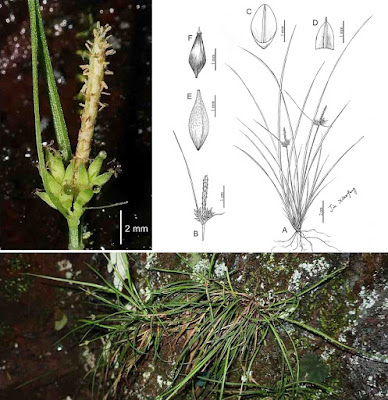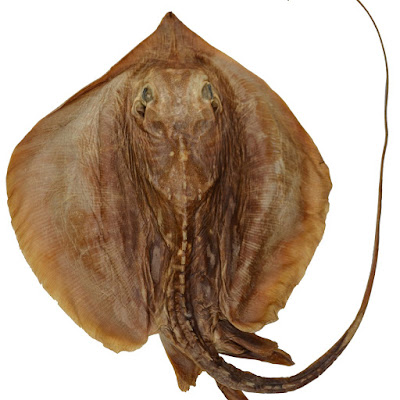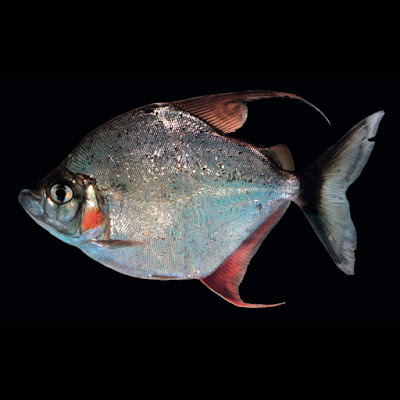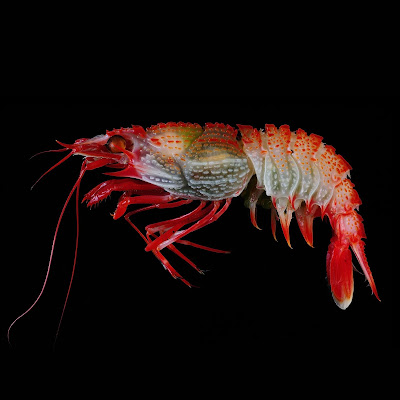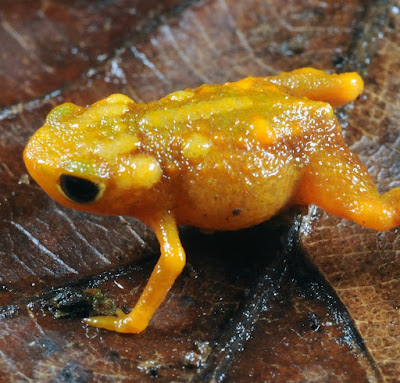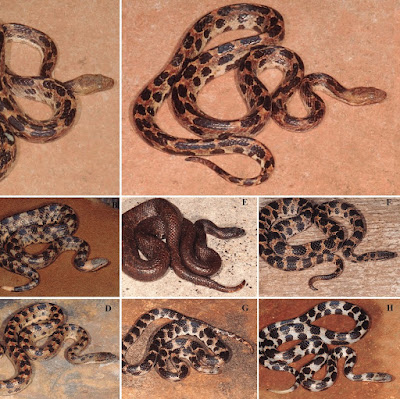[Most Recent Entries] [Calendar View]
Tuesday, July 28th, 2020
| Time | Event | ||||||
| 7:25a | [Botany • 2020] Carex pingleensis (Cyperaceae; sect. Mitratae) • A New Species from Guangxi, China
Abstract Carex pingleensis Z.C. Lu, Y.F. Lu & X.F. Jin, a new species of Carex sect. Mitratae Kük. from northeastern Guangxi, China, is described and illustrated. This species is easily distinguished from all the other species of sect. Mitratae by its spikes gathering at the top of culms; nutlets neither contracted on angles nor excavated at faces; male glumes apex obtuse, both sides united near base, abaxial surface with pubescence and utricles shorter, only 2.8–3.2 mm long, densely pubescent. Keyword: Carex pseudotristachya, Carex tristachya, Cyperaceae, morphology, taxonomy
Carex pingleensis Z.C. Lu, Y.F. Lu & X.F. Jin, sp. nov. 平樂薹草 Type: CHINA. Guangxi: Guilin City, Pingle County, Yao Nationality Township of Dafa, Pingshan Village, in evergreen broad-leaved forests, elevation ca. 440 m, 20 May 2019, Yu-Lan Su and Jin-Quan Huang LZC199 (holotype: IBK00421264; isotype: IBK00421266 and HTC). Diagnosis: Carex pingleensis is similar to Carex pseudotristachya X.F. Jin & C.Z. Zheng and Carex tristachya Thunb., but differs from the latter two species in its culms 6–9.5 cm tall (vs. 15–20 cm and vs. 20–45 cm); leaves much surpassing the culms (vs. equaling to exceeding culms and vs. shorter than or nearly equaling culms); male glumes abaxial surface with pubescence (vs. glabrous and vs. glabrous); utricles 2.8–3.2 mm long (vs. 4.5–5 mm and vs. 3–3.2 mm), densely pubescent (vs. puberulent and vs. puberulent). Distribution and habitat: Carex pingleensis has only been collected from Pingle County, Guangxi, China. This new species grows in a valley of evergreen broadleaved forests, at an elevation of 400–500 m. Associated species include Cibotium barometz (L.) J. Sm., Diospyros xiangguiensis S. Lee, Ficus langkokensis Drake, Helicia reticulata W.T. Wang, Homalium cochinchinense (Lour.) Druce, Nothapodytes pittosporoides (Oliv.) Sleumer, Pilea peploides (Gaudich.) Hook. et Arn., Pothos chinensis (Raf.) Merr. Etymology: The specific epithet ‘pingleensis’ refers to the type locality of this new species. Zhao-Cen Lu, Yu-Lan Su, Yi-Fei Lu and Xiao-Feng Jin. 2020. Carex pingleensis (Carex sect. Mitratae), A New Species of Cyperaceae from Guangxi, China. Taiwania. 65(3); 391-395. taiwania.ntu.edu.tw/abstract.php?type=ab | ||||||
| 7:37a | [Ichthyology • 2020] Hemitrygon yemenensis • A New Species of Stingray (Myliobatoidea: Dasyatidae) from the northwestern Indian Ocean
Abstract A new stingray, Hemitrygon yemenensis sp. nov., is described from old preserved material collected on the Arabian Sea coast of eastern Yemen. Consistent with other members of the genus, H. yemenensis sp. nov. is a small dasyatid (males mature at ~22 cm disc width), but it is the only Hemitrygon known to occur outside the western Pacific and eastern Indian Oceans. Hemitrygon yemenensis sp. nov. most closely resembles H. bennetti, but H. yemenensis is separable based on several characters including a longer and more narrowly pointed snout, shorter tail, and a longer disc and head. Hemitrygon yemenensis is unknown to science beyond the two type specimens collected nearly 120 years ago. Keywords: Hemitrygon yemenensis, Dasyatidae, stingray, batoid, elasmobranch, new species, Yemen, western Indian Ocean, Myliobatoidea Alec B.M. Moore, Peter R. Last and Gavin J. P. Naylor. 2020. Hemitrygon yemenensis sp. nov., A New Species of Stingray (Myliobatoidea: Dasyatidae) from the northwestern Indian Ocean. Zootaxa. 4819(2); 364–374. DOI: 10.11646/zootaxa.4819.2.8 | ||||||
| 8:04a | [Ichthyology • 2020] Catoprion absconditus • Molecular Delimitation and Taxonomic Revision of the Wimple Piranha Catoprion (Characiformes: Serrasalmidae) with the Description of A New Species
Abstract A taxonomic revision of wimple piranhas of the genus Catoprion is performed in combination with a molecular analysis using mtDNA. Molecular phylogenetic analyses of 49 specimens using genetic distances, conventional likelihood and four delimitation methods yielded two distinct lineages of Catoprion , with the morphological analyses of 198 specimens of Catoprion corroborating the molecular results. We provide a redescription of Catoprion mento, from the Paraguay, Orinoco, and tributaries of western Amazon basin, keeping Mylesinus macropterus as a junior synonym of C. mento, and the description of Catoprion absconditus n. sp., from the Amazon and Essequibo basins. C. absconditus n. sp. differs from C. mento by the presence of 86–94 perforated scales in the lateral line (vs. 65–86 scales) and the presence of 35–40 circumpeduncular scales (vs. 29–34 scales). The distribution of C. mento follows the Amazonas‐Paraguay‐Orinoco lowlands, whereas C. absconditus follows the eastern Amazon biogeographic pattern. Keywords: biodiversity, DNA barcoding, Neotropical region, systematics, Teleostei Catoprion Müller & Troschel, 1844 Etymology: Cato, from the ancient Greek kata, meaning down; prion, from the Greek prion, meaning saw; probably referring to the ventral keel with spines. Catoprion mento (Cuvier, 1819)
Catoprion absconditus Mateussi, Melo & Oliveira sp. nov. Etymology: The epithet absconditus is from the Latin meaning “hidden.” C. absconditus has been identified as C. mento in the Amazon basin for 201 years, since its original description (Cuvier, 1819). Nadayca T. Bonani Mateussi, Bruno F. Melo and Claudio Oliveira. 2020. Molecular Delimitation and Taxonomic Revision of the Wimple Piranha Catoprion (Characiformes: Serrasalmidae) with the Description of A New Species. Journal of Fish Biology. DOI: 10.1111/jfb.14417 | ||||||
| 8:36a | [Crustacea • 2020] Deep-sea Shrimps of the Genus Glyphocrangon A. Milne-Edwards, 1881 (Decapoda: Caridea: Glyphocrangonidae) collected by the SJADES 2018 Expedition off Java, Indonesia, with Description of One New Species
Abstract A collection of the caridean shrimp genus Glyphocrangon A. Milne-Edwards, 1881 (Glyphocrangonidae), made during the South Java Deep-Sea Biodiversity Expedition 2018 (SJADES 2018), is comprised of six species, including one new to science: G. hakuhoae Takeda & Hanamura, 1994, G. indonesiensis Komai, 2004b, G. juxtaculeata Chace, 1984, G. proxima Komai, 2004b, G. serratirostris, new species, and G. sibogae de Man, 1918. Glyphocrangon juxtaculeata, which was originally described on the basis of a single juvenile holotype and previously placed in the synonymy of G. regalis Spence Bate, 1888, is herein reinstated as a valid species on the basis of examination of a newly collected female specimen. Glyphocrangon serratirostris, new species, belongs to the “G. regalis” species complex, but is quite distinctive in having four or more lateral spines on each side of the rostrum. Genetic analyses using partial segments of the mitochondrial COI gene also supports the recognition of the new species. Key words. COI, Glyphocrangon juxtaculeata, Glyphocrangon serratirostris, SJADES 2018
Glyphocrangon serratirostris, new species Etymology. The specific epithet is derived from the combination of serratus (L., saw-shaped) and rostrum (L., beak), in reference to the characteristic armature of the lateral margin of the rostrum in the new species. Used as a noun in apposition. Tomoyuki Komai, Chien-Hui Yang and Tin-Yam Chan. 2020. Deep-sea Shrimps of the Genus Glyphocrangon A. Milne-Edwards, 1881 (Decapoda: Caridea: Glyphocrangonidae) collected by the SJADES 2018 Expedition off Java, Indonesia, with Description of One New Species. RAFFLES BULLETIN OF ZOOLOGY. 68; 636–653. | ||||||
| 9:15a | [Herpetology • 2020] Rediscovery of the Toadlet Brachycephalus bufonoides Miranda-Ribeiro, 1920 (Anura: Brachycephalidae) with Osteological and Acoustic Descriptions
Abstract Brachycephalus bufonoides was described as a “variety” of B. ephippium based on two specimens which 90 years later was considered full species. Besides its brief original description, nothing else is known for this species. Herein we report the rediscovery of the pumpkin-toadlet Brachycephalus bufonoides from Nova Friburgo, State of Rio de Janeiro, the second most populous area within the Atlantic Forest in Brazil. A detailed osteological description of this species was also provided, including skull, hyolaryngeal skeleton and postcranium skeleton. The laryngeal skeleton of Brachycephalus genus was depicted for the first time. We conducted a molecular phylogenetic analysis of Brachycephalus using DNA sequences comprising two fragments of mitochondrial gene (16S). Both analysis with Bayesian inference and maximum parsimony supported the recognition of B. bufonoides as an exclusive lineage, allocated within the B. ephippium species group in B. vertebralis lineage. We improved the diagnosis and variation of the species, including more collected specimens, coloration in vivo and advertisement call description. Compared with its congeners, B. bufonoides has skin on head and dorsum with dermal hyperossification; skull with hyperossification of postorbital crests; a pair of hyperossified bulges about equidistant between postorbital crests; fourth presacral vertebra with transverse process hyperossified, ornamented and sacral diapophyses hyperossified, which can be seen externally (lineage of B. vertebralis sensu Condez et al. 2020); presence of dermal ossification as separated bulges of each vertebrae; general background color orange with different intensities of dark orange blotches on dorsum, including bordering of sacral region; absence of osteoderms and presence of warts on the dorsolateral surface of body; medium body size (SVL of adults: 12.0–14.5 mm for males and 14.7–16.3 mm for females; Table 1); rough dorsum; advertisement calls with 13 to 17 pulses; presence of pulse period modulation; and advertisement calls with notes longer than 0.2 s (0.22 to 0.31 s). Herein an important contribution for the taxonomy and systematics of this genus is provided, including a large amount of novel information for B. bufonoides from different sources (i.e., molecular, morphological variation, bioacoustic), allowing it to be included in future studies of species delimitation and relationships within Brachycephalus. Also, the discovery of this species reiterates the importance of Nova Friburgo for the conservation of the Atlantic Forest biodiversity. Keywords: Atlantic Forest; Brachycephaloidea; Morphology; Natural History; Taxonomy; Anura
Brachycephalus bufonoides Miranda-Ribeiro, 1920 Manuella Folly, Lucas Coutinho Amaral, Sergio Potsch de Carvalho-e-Silva and José P. Pombal Jr. 2020. Rediscovery of the Toadlet Brachycephalus bufonoides Miranda-Ribeiro, 1920 (Anura: Brachycephalidae) with Osteological and Acoustic Descriptions. Zootaxa. 4819(2); 265–294. DOI: 10.11646/zootaxa.4819.2.3 | ||||||
| 11:20a | [Botany • 2020] Rhinacanthus spiciformis (Acanthaceae) • A New Species from northern Vietnam
Abstract Rhinacanthus spiciformis Y. F. Deng, Z. L. Lin & D. V. Hai, a new species from northern Vietnam previously misidentified as R. calcaratus is described and illustrated. This new species differs from all other Asian species of Rhinacanthus in the inflorescence being unbranched or comprised of trifurcate‐branched spikes, and the lower lip of corolla with conspicuous purple stripes near throat and on lobes. The pollen morphology and chromosome number are presented. It is proposed to be accessed as Least Concern (LC) according to the IUCN categories and criteria. Keywords: Acanthaceae, basic chromosome number, pollen, Rhinacanthus calcaratus, taxonomy Rhinacanthus spiciformis Y. F. Deng, Z. L. Lin & D. V. Hai, sp. nov. Etymology: The specific epithet ‘spiciformis’, meaning ‘spike‐shaped’, refers to the clearly spicate inflorescence which is more pronounced than in other Asian Rhinacanthus species. Zhe‐Li Lin, Do Van Hai, Xiao‐Ying Hu and Yun‐Fei Deng. 2020. Rhinacanthus spiciformis, A New Species of Acanthaceae from northern Vietnam. Nordic Journal of Botany. DOI: 10.1111/njb.02746 | ||||||
| 3:42p | [Herpetology • 2020] Tropidophis steinleini • A New Species of Tropidophis (Squamata: Tropidophiidae) and Molecular Phylogeny of the Cuban Radiation of the Genus
ABSTRACT Cuba has the highest diversity of snakes in the genus Tropidophis, representing 53 % of all the known species. Tropidophis steinleini sp. nov. is described from the eastern region of Cuba, raising the number of species to 17 in this archipelago. The new species is most closely related to T. wrighti, T. spiritus and T. morenoi. We discuss the phylogenetic relationships of this new species and other species of the genus in Cuba, based on molecular data, and classified them within three species groups according to the obtained tree topology. Keywords: Caribbean Islands, snakes, dwarf boas, DNA, classification, species groups
Tropidophis steinleini sp. nov. Diagnosis. Species in the Tropidophis pardalis species group as defined in the herein-presented molecular phylogeny (see Fig. 3, also Fig. 6 for species comparisons, and the Discussion). Body slender and laterally compressed; head distinctive from neck; 6 rows of dark blotches around body; some of the paravertebral and lateral blotches are longitudinally fused; 23 scale rows around midbody; 188 ventral scales; an evident groove above the supralabial scales; first supralabial slightly higher than second. Regarding morphology and the phylogenetic relationships, the new species is most similar to T. spiritus, T. morenoi and T. wrighti (Table I; Fig. 6 F, G, H, respectively). In the three species the first supralabial scale is much lower than second one; the head is gradually tapered in profile compared with the flat head top and a higher snout of the new species; a groove over the supralabial scales is absent (Fig. 2). T. wrighti has four rows of large blotches around body instead of 6, contrasting on a homogenous gray to white-colored background (Fig. 6H); some of the blotches are fused at the mid-dorsum but not in a distinctive longitudinal way; ventral scale counts (192–222) are higher than in Tropidophis steinleini sp. nov. T. morenoi and T. spiritus have 183–200 ventral scales, widely overlapping with Tropidophis steinleni sp. nov., and similar coloration considering that the three species have 6 rows of blotches around the midbody and pale lower flanks; however, the head shape is different (Fig. 2) as mentioned above. The snout is slightly shorter in available T. spiritus and T. morenoi (30–33 % of head length, x = 31 %, n = 7) compared with Tropidophis steinleini sp. nov. (34 %); paravertebral blotches are not longitudinally enlarged in T. spiritus and T. morenoi (Fig. 6 F, G), but instead some transversal fusion may exist, giving them a banded appearance (a condition not present in the new species); head is darker in T. spiritus and T. morenoi, with more evident and contrasting pattern of blotches and stripes which is somewhat diffuse or barely evident in Tropidophis steinleini sp. nov. Etymology. The species is named with gratitude, after our German colleague Claus Steinlein, for his support of the authors’ herpetological research in Cuba. Luis M. Díaz and Antonio Cádiz. 2020. A New Species of Tropidophis (Squamata: Tropidophiidae) and Molecular Phylogeny of the Cuban Radiation of the Genus [Una nueva especie de Tropidophis (Squamata: Tropidophiidae) y filogenia molecular de la radiación cubana del género] Novitates Caribaea. 16; 1-19. DOI: 10.33800/nc.vi16.222 Resumen: Cuba tiene la mayor diversidad de serpientes del género Tropidophis, lo cual representa 53 % de todas las especies conocidas. Tropidophis steinleini sp. nov. es descrita de la región oriental de Cuba, lo cual eleva a 17 el número de especies en este archipiélago. La nueva especie está más cercanamente emparentada con T. wrighti, T. spiritus y T. morenoi. Se discuten las relaciones filogenéticas de la nueva especie y otras del género en Cuba, sobre la base de datos moleculares, y se clasifican en tres grupos de acuerdo con la topología del árbol obtenido. |
| << Previous Day |
2020/07/28 [Calendar] |
Next Day >> |
